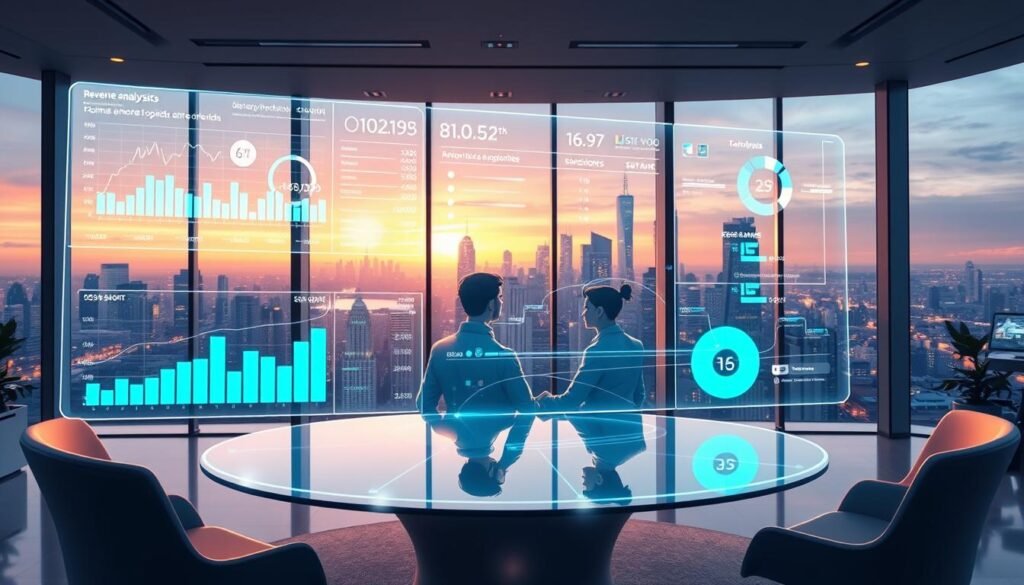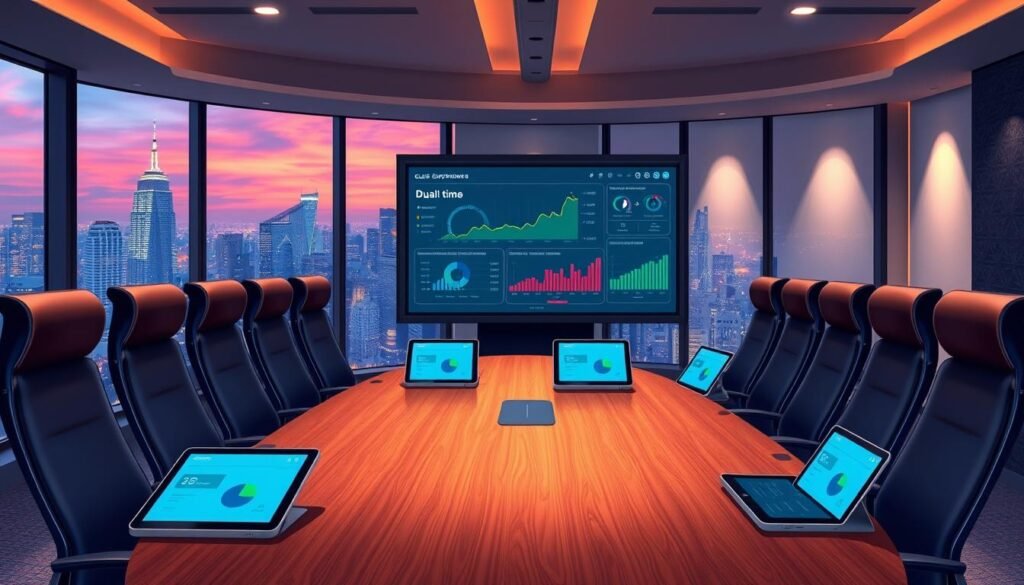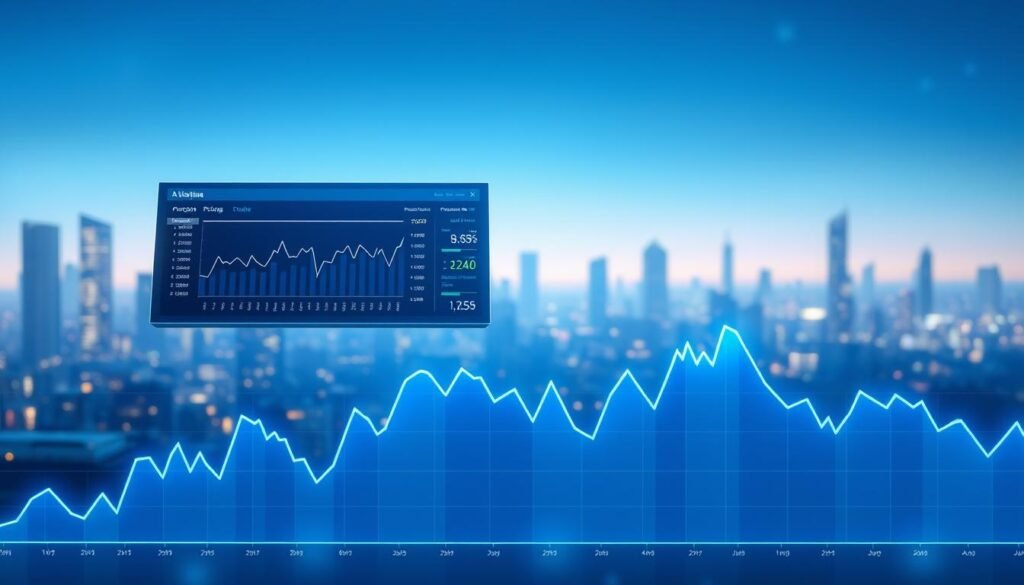HOME / SINGLE POST

Imagine a world where every guest interaction becomes a strategic business decision. 84% of hospitality leaders now report that front desk teams directly influence more than 40% of total property earnings through upselling and dynamic rate adjustments. This revelation reshapes how modern hotels approach their most valuable customer touchpoints.
Gone are the days of static spreadsheets and guesswork. Today’s top-performing properties leverage AI-powered systems that analyze market conditions, guest preferences, and inventory levels simultaneously. These tools empower staff to make informed decisions during peak check-in periods when conversion opportunities matter most.
The most successful operations combine human expertise with predictive analytics. Teams trained in strategic pricing techniques can increase ancillary sales by 18% while maintaining 92% guest satisfaction scores. This balance transforms routine interactions into profit-generating moments without compromising service quality.

Hospitality leaders now achieve 23% higher profitability by replacing legacy systems with intelligent platforms. This shift marks a decisive break from reactive strategies, where teams once spent hours updating spreadsheets instead of engaging guests.
Manual tracking methods consumed 15 hours weekly per property before automation. Today’s systems cross-reference historical patterns, competitor rates, and live booking trends in milliseconds. A 2024 Cornell study found properties using predictive tools achieved 31% faster decision-making than spreadsheet-reliant peers.
Sophisticated algorithms now evaluate 12+ variables simultaneously – from weather forecasts to event calendars. This depth of analysis helps teams adjust pricing before demand shifts occur, not after.
Properties using real-time analytics report 19% fewer missed opportunities during peak seasons. Dynamic systems identify underperforming rate plans 58% faster than manual reviews, according to Hospitality Technology benchmarks.
Forward-looking strategies blend occupancy forecasts with guest preference data. This approach reduces reliance on intuition, creating pricing models that adapt as markets evolve. When local concerts or conferences emerge, automated alerts suggest rate adjustments within minutes.

Modern hospitality thrives when service excellence meets strategic decision-making. A 2024 industry report reveals properties combining operational efficiency with personalized service achieve 22% higher repeat bookings than competitors. This synergy transforms routine interactions into opportunities for value creation.
Front desk teams now use real-time analytics to match room assignments with guest preferences. This approach reduces check-in time by 35% while increasing upgrade acceptance rates. Dynamic pricing explanations during check-in foster transparency – 68% of travelers appreciate clear rationale for rate changes.
The ZHAW University study confirms professional implementation maintains satisfaction levels. Guests recognize fair pricing strategies when staff communicate value effectively. Properties using this method see 19% higher ancillary sales without negative feedback.
| Metric | Before Integration | After Integration |
|---|---|---|
| Staff Decision Time | 4.2 minutes | 1.8 minutes |
| Guest Satisfaction | 88% | 91% |
| Upsell Conversions | 14% | 27% |
| Repeat Bookings | 41% | 53% |
Operational improvements allow teams to analyze guest histories during check-in processes. This enables personalized offers based on past stays and preferences. Hotels report 31% faster response times to special requests when using integrated systems.
Training programs focusing on data interpretation help staff explain pricing variations confidently. Properties investing in these skills achieve 94% satisfaction scores during peak seasons. The result? Guests perceive fairness while businesses optimize earnings.

Dynamic pricing algorithms are rewriting the rules of hotel profitability. A 2024 STR Global study reveals properties using these tools achieve 28% higher earnings during peak seasons compared to fixed-rate competitors. This approach turns pricing into a strategic asset rather than an administrative task.
Modern systems analyze 15+ variables simultaneously – from concert dates to flight cancellations. Unlike static models, these algorithms adjust room rates every 2-4 hours based on live demand signals. The ZHAW University research shows 73% of travelers consider this method fairer than traditional pricing.
| Factor | Static Pricing | Dynamic Pricing |
|---|---|---|
| Rate Updates | Monthly | Hourly |
| Market Response | 48-hour delay | 15-minute adjustment |
| Booking Conversion | 22% | 34% |
| Ancillary Sales | $18/booking | $29/booking |
Properties using dynamic strategies report 19% better occupancy during off-peak periods. Automated systems identify hidden demand patterns human analysts often miss – like last-minute event-driven bookings.
Live dashboards now show competitor rates alongside occupancy forecasts. This enables teams to spot opportunities 83% faster than manual methods. When a nearby hotel sells out, smart systems automatically suggest rate increases before demand spikes.
Integrated platforms sync prices across all booking channels in under 90 seconds. This prevents rate discrepancies that could damage brand reputation. Hotels using real-time analytics achieve 31% faster response times to market changes compared to legacy systems.
Hotel profitability increasingly hinges on decisions made at the check-in counter. Teams equipped with real-time analytics achieve 31% faster response times to guest requests while boosting ancillary sales by 19%, according to 2024 AHLA benchmarks.
Modern desk leaders now balance staff schedules with predictive occupancy data. This approach reduces labor costs by 14% during slow periods while maintaining service standards. One Las Vegas resort reported 22% higher upsell conversions after aligning room assignments with guest spending histories.
Effective managers use three core strategies:
| Metric | Standard Approach | Optimized Strategy |
|---|---|---|
| Staff Efficiency | 78% | 91% |
| Service Response Time | 6.2 minutes | 3.8 minutes |
| Ancillary Revenue | $23/guest | $37/guest |
Properties integrating these methods see 27% faster check-ins and 15% higher satisfaction scores. The key lies in transforming routine tasks into strategic opportunities – like suggesting spa upgrades when systems detect early arrivals.
Cornell University’s 2024 hospitality study reveals properties using predictive analytics achieve 34% higher forecast accuracy than traditional methods. This precision enables teams to align room inventory with emerging demand patterns while maintaining service quality.
Modern systems analyze 18+ variables – from flight cancellations to concert ticket sales. Unlike legacy tools, these platforms update predictions every 15 minutes using live booking pace data. A Las Vegas resort using this approach reduced overstocked inventory by 27% during slow seasons.
| Forecasting Factor | Traditional | Modern |
|---|---|---|
| Data Sources | 3-5 | 18+ |
| Update Frequency | Weekly | 15-minute intervals |
| Accuracy Rate | 68% | 89% |
| Personalization | Basic | Segment-specific |
Top hotels now categorize travelers using spending patterns and digital behavior. This method increases email campaign conversions by 19% compared to broad-blast marketing. Properties targeting local event attendees see 22% higher last-minute bookings.
Effective segmentation considers three key elements:
Teams using these strategies report 31% faster response to market shifts. When a tech conference emerges, systems automatically adjust rates for business travelers while creating family packages for accompanying guests.
Smart hotels now turn guest preferences into profit opportunities through precision targeting. A 2024 Hospitality Tech study shows properties using AI-driven recommendations achieve 39% higher upgrade acceptance rates than traditional methods. This shift transforms routine interactions into value-building moments.
Modern systems analyze past stays and booking patterns to suggest relevant upgrades. For example, families might receive poolside room packages, while business travelers see workspace enhancements. This approach increases ancillary sales by 22% without feeling pushy.
Timing proves crucial. Pre-arrival emails with spa discounts convert 18% better than generic offers. During check-in, staff equipped with spending histories can propose local experience bundles matched to individual interests. One Miami resort boosted repeat bookings by 27% using this strategy.
The key lies in balancing profit goals with genuine care. When guests perceive offers as thoughtful enhancements rather than sales pitches, satisfaction scores rise alongside earnings. It’s not just about maximizing revenue – it’s about creating memorable stays that keep travelers coming back.
Never miss any important news. Subscribe to our newsletter.